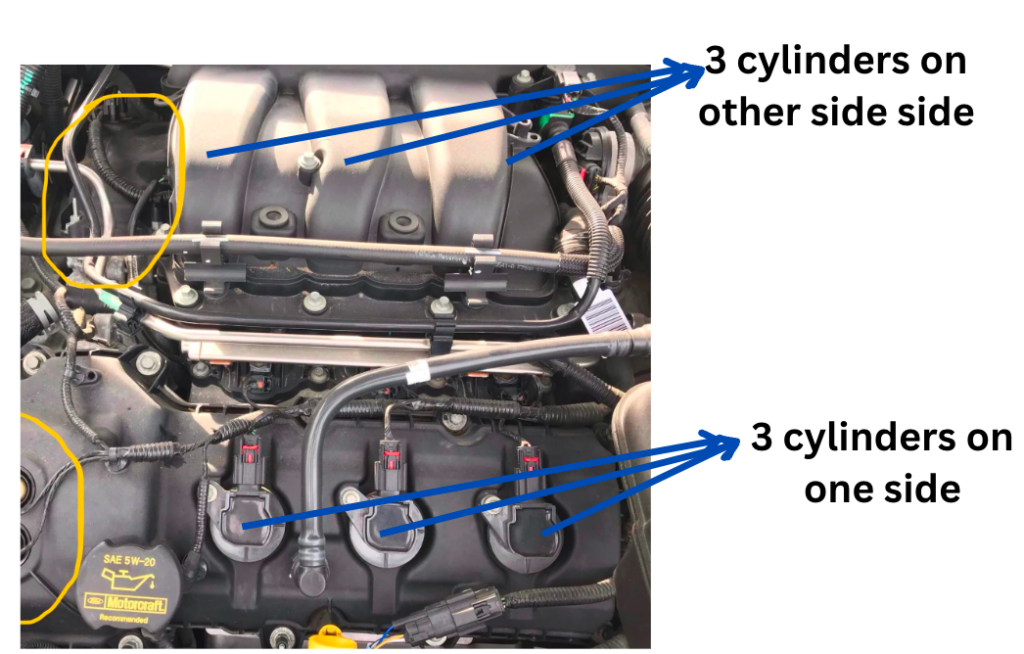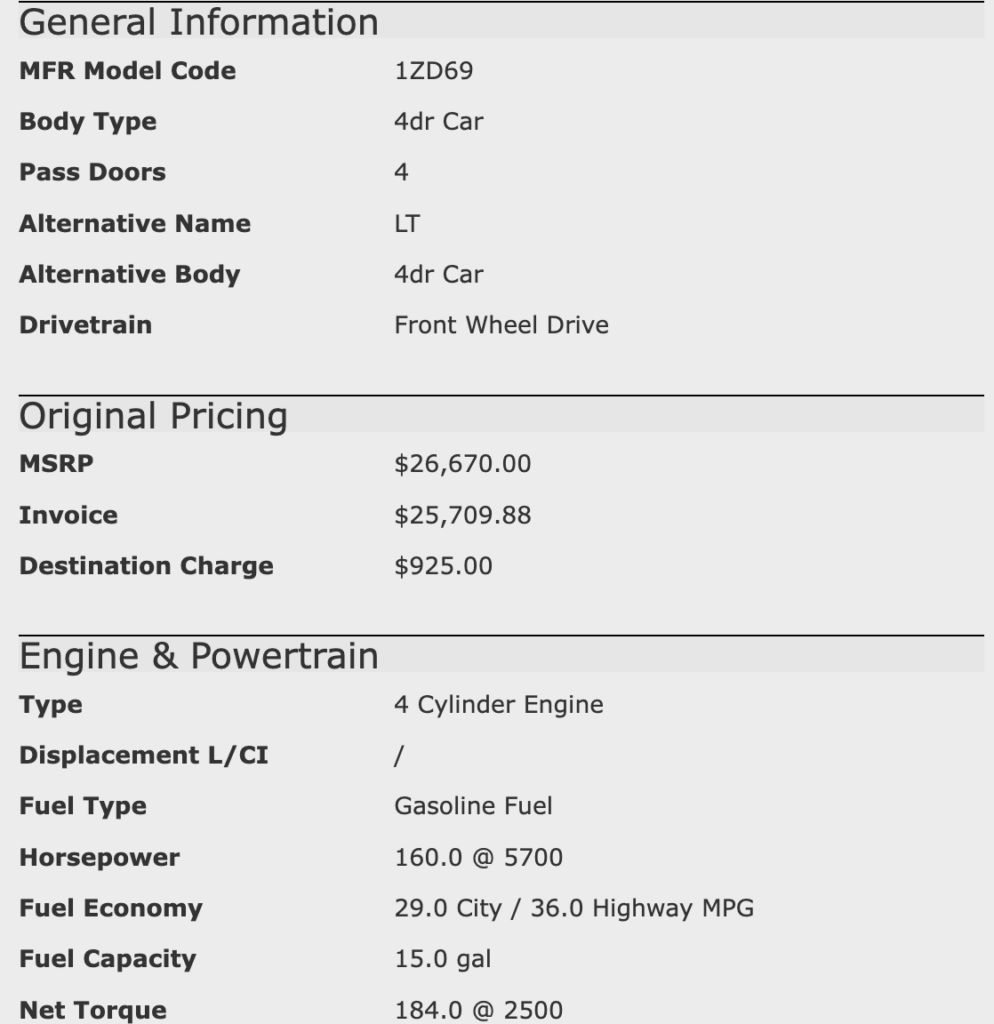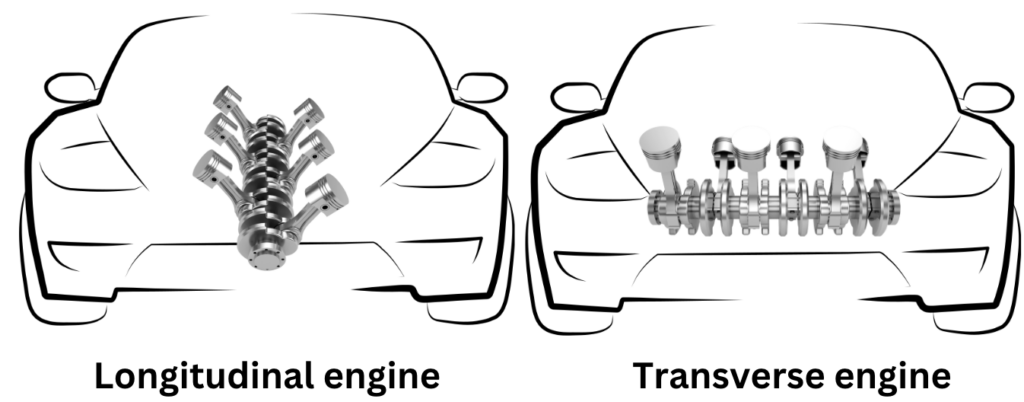How Many Cylinders Is My Car by Vin?
Ever opened the hood of your car and wondered just how many cylinders are powering this thing? The number of cylinders influences everything from gas mileage to horsepower, so it’s an important specification to know.
In this guide, we’ll look at easy ways to determine your car’s cylinder count using your VIN, no popping the hood required.
The VIN contains information about your car’s engine, including cylinder count. Enter the VIN into an online decoder to see the engine details and number of cylinders. For V-engines, look at the engine cover – V6 has 3 cylinders per side, V8 has 4. Inline engines are more complex – you’ll need the VIN decoder or other methods to get the cylinder count. I’ll explain how to determine cylinders in inline engines later.
Identifying Number Of Cylinders Using VIN Decoder
Finding out how many cylinders your car has is easy if you know where to look. The VIN number is like your car’s fingerprint. It tells you everything about your ride, from the make and model to the engine type.
To me, the best way is to use an online VIN decoder. Just type in your VIN, and it will show the number of cylinders your engine has. This gives you the exact info straight from the factory specs.
With V-type engines, seeing the cylinders is simple. Just pop the hood and check the engine cover. You’ll see “V-6” or “V-8” stamped right on it. A V6 divides into two rows of 3 cylinders in a V shape. And a V8 splits into two rows of 4. So you can easily count the spark plugs on each side to double check.

The above figure represents a V-6 engine, having 3 cylinders on each side.
However, for inline engines, the process is a bit more complex. To figure out the number of engine cylinders, you’ll have to use a VIN decoder or try other methods. Fortunately, I’ll be providing detailed instructions later in this article to determine exact number of cylinders in the inline engine.
What Is VIN?
A VIN is like a car’s fingerprint. This unique 17-character code gets assigned to every vehicle made after 1981. It uses both letters and numbers to share key details about that specific automobile.
- When I see a VIN like 1GNEK13T25J251923, I can learn a lot. The first number tells me where the car got built. A 1 means the United States, while a 2 is Canada.
- The next two letters reveal who made it. Then I see what type it is – a truck, sedan or something else.
- The middle chunk unpacks the most. I can figure out the brand, body style, engine size, model line and more just from those digits! It’s like an auto biography printed right on the car.
- There’s even a sneaky number (9th one) in there to confirm no one tampered with the VIN. And another one sharing which year it rolled off the line.
- The last few figures act like a serial number to differentiate that vehicle from every other one of the same kind.
You can use this VIN decoder.
For instance, I put the following VIN code: 1G1ZD5ST2LF002052 in the VIN decoder I listed above. The vehicle came out to be 2020 Chevrolet Malibu. It is a 4-cylinder engine as indicated in the data displayed by the VIN decoder.

You can also determine the engine size of your vehicle and get information of its parts by VIN From a Mechanic On JustAnswer .
How Do I Find Parts For My Car with the VIN Number?
Finding parts for your car using the VIN is really easy! Here are a couple ways I like to do it:
First, I can call up my local dealership or auto parts store. When they ask what I need, I just read my VIN number to them. Then they can look up the exact parts that fit my car – it’s that simple! I don’t have to know the make or model or anything. The VIN tells them everything they need to know.
Another good way is to use online VIN decoder tools. I just type in my VIN and it tells me the make, model, engine – all the specifics of my car. Then I can take that information to any auto parts store and ask for the right OEM parts.
For example, I put my Toyota VIN into this website and it shows me all the original Toyota parts I can order. Each car company has websites like this to find their genuine parts. I also found this website for looking up Ford parts by VIN.
And on forums, someone shared this website for Lexus parts. You can search for Lexus parts by VIN there too.
Other Ways To Determine the Number of Engine Cylinders
Figuring out how many cylinders your car’s engine has can seem tricky. But there are a few easy ways to find out!
To me, the simplest way is to count the spark plugs. Most of the time, each cylinder has its own plug. So if you see four spark plugs – that likely means a four cylinder engine!
Some cars have plastic engine covers that hide everything. Pop that cover off, and check for ignition coils. With coil-on-plug (COP) engines, you’ll see one coil sitting on top of each spark plug. So again, just count the coils to know your cylinder number.

Look atthe picture above. You might have noticed four separate coils – tellingyour it’s a four cylinder engine.
You can also look in your owner’s manual. The specs section will list the engine size, and say how many cylinders it has. I like to keep my manual handy for questions like this.
How Do I Know If My Car Is A 4-cylinder Or 6-cylinder?
One easy way I found is by counting the spark plugs under the hood. Four spark plugs means it’s a 4-cylinder. Six spark plugs indicates a 6-cylinder engine.
Personally, I just check the owner’s manual for the engine specs instead of counting plugs. The manual lists everything about your engine. Or you can search online for your car’s make, model, and year to find the cylinder count.
In my experience, cylinder count affects performance. A 4-banger is typically more fuel-efficient, better for smaller cars and daily drives. But a 6-cylinder has more power for larger vehicles, towing, or off-roading. To me, matching engine size to your needs is important.
V6 Cylinders Number Identification

You can read this guide to understand longitudinal and transverse engine configuration.
The V-6 engine has two rows of cylinders. Each row has three cylinders. To know which cylinder is which, you need to understand how the engine is built.
The front of the engine has the crankshaft pulley and belt. The rear has a flywheel and transmission.
Look at the engine from the front. The cylinder closest to the front is number 1.
With V-6 engines, the cylinders are numbered either clockwise or with even numbers on one side and odd on the other.
Check the firing order in the owner’s manual. That shows the cylinder numbering.
If the order is 1-4-2-5-3-6, the numbering goes clockwise starting from cylinder 1. If it’s 1-2-3-4-5-6, evens are on one side, odds on the other.
V8 Cylinders Number Identification
Unlike the V-6 engine, the V8 engine contains two banks of four cylinders each, with each bank located on opposite sides of the engine. For V8 engines, cylinder number one is also located closest to the front of the engine. Cylinders 3,5 and 7 are on the same bank on which cylinder 1 is located, and cylinders 2, 4, 6, 8 are on the other bank regardless of the firing sequence.
Inline Engine Cylinders Numbering
Understanding the cylinder numbering on an in-line engine is essential for diagnosing and repairing any issues that may arise. For inline engines, the numbering sequence starts at the front pulley end and ends at the flywheel end. This remains true regardless of whether the engine is installed lengthwise or transversely.
Why Is Cylinders Numbering Sequence Important?
When diagnosing issues with an engine, it is important to know which cylinder is misfiring or causing the issue. By identifying the cylinder number, you can check the spark plug, ignition coil, and fuel injector for any faults.
Usually, the engine misfire trouble code is P030X, where X is the cylinder number in which misfiring is occurring. So, if you know the engine cylinder numbering sequence, you can readily know which cylinder is misfiring and can take steps to fix the issue.
